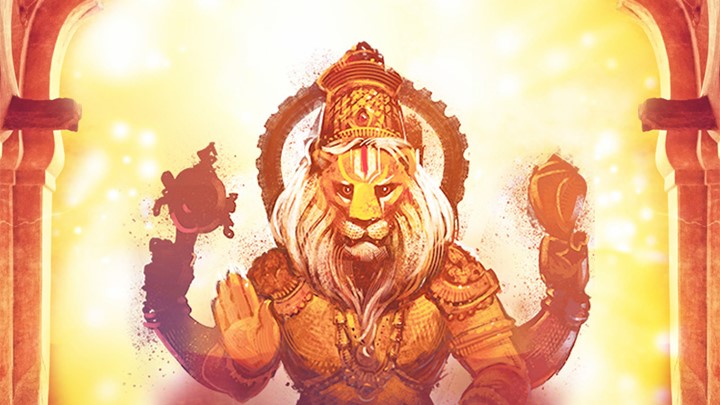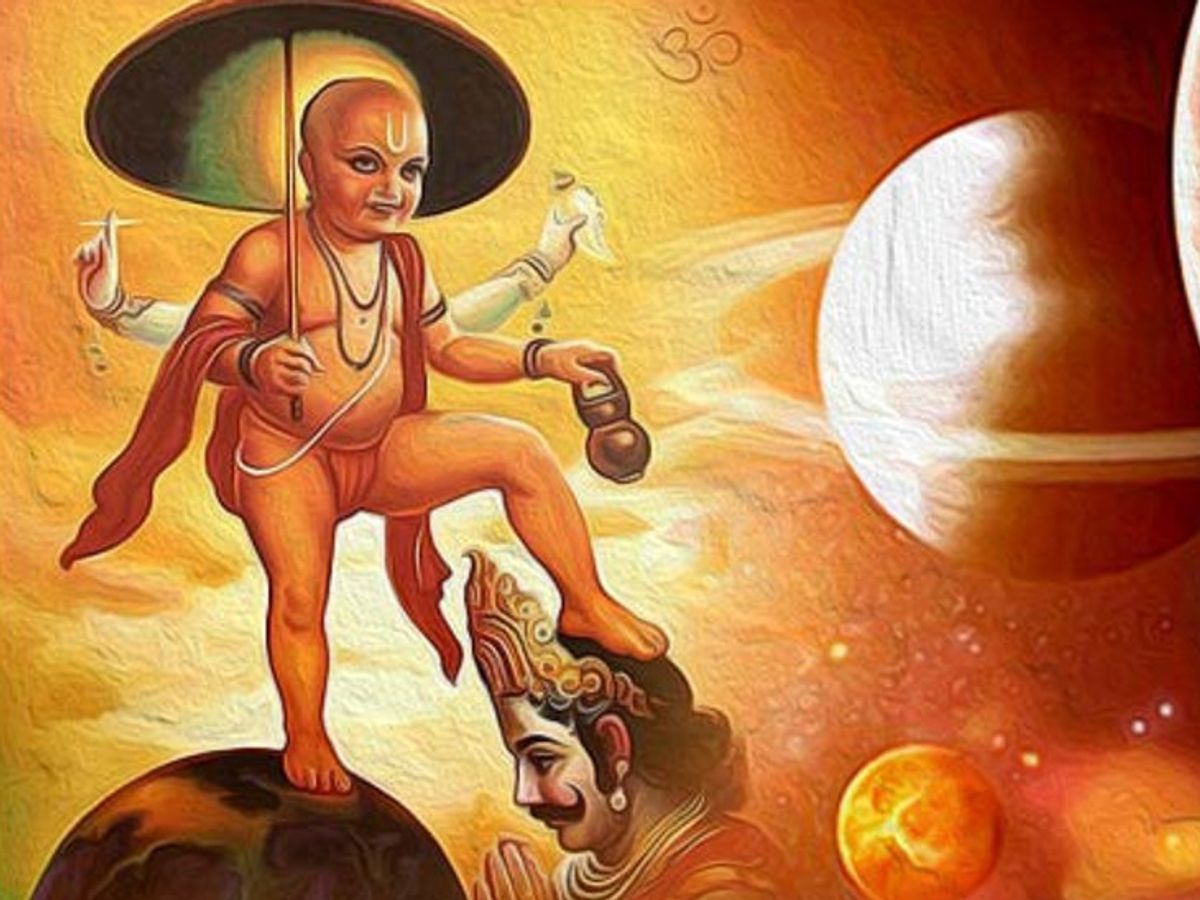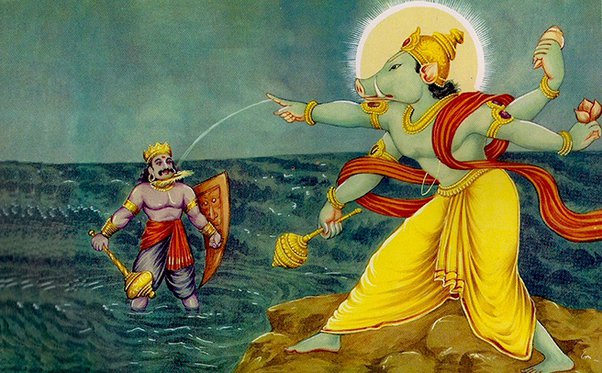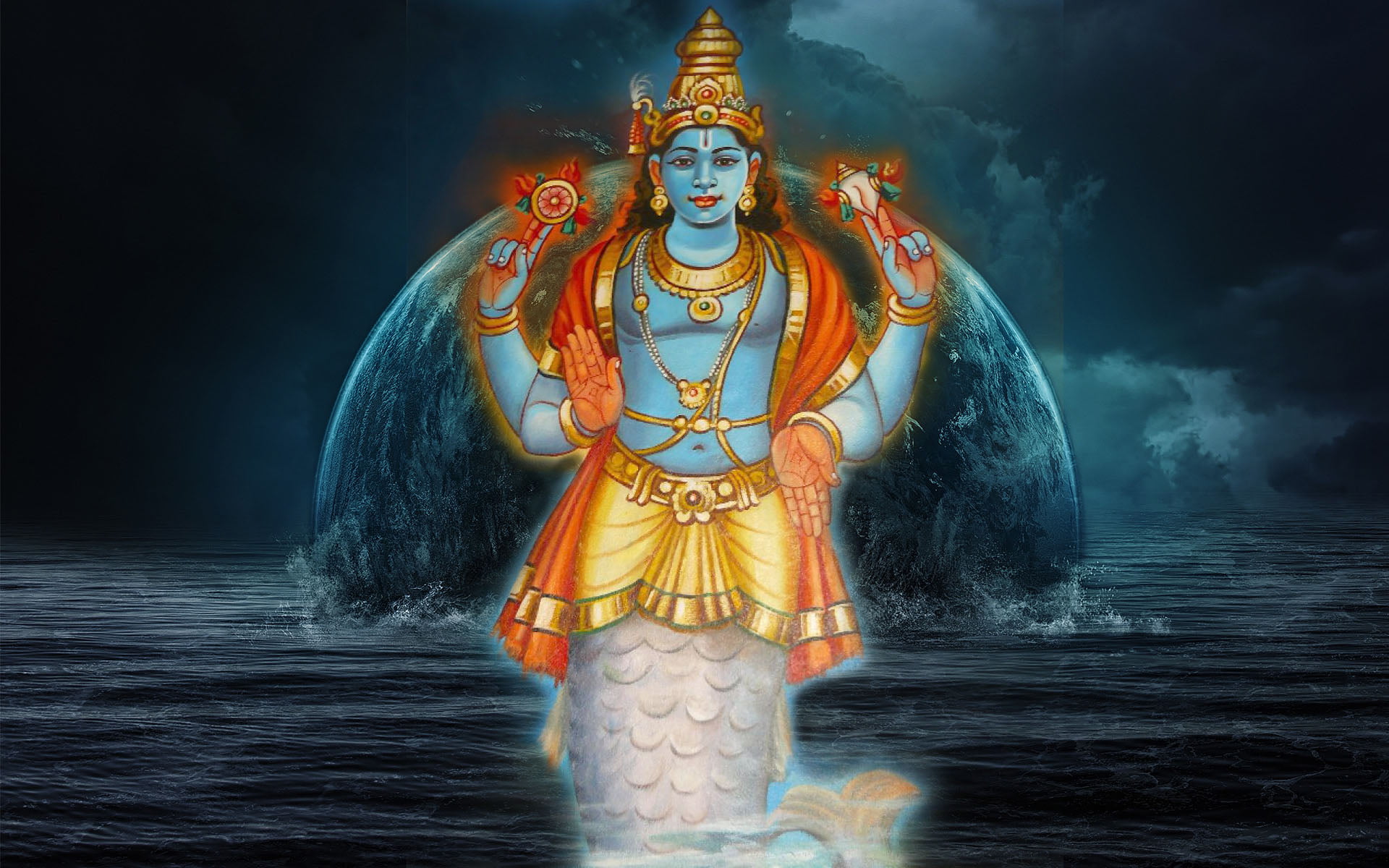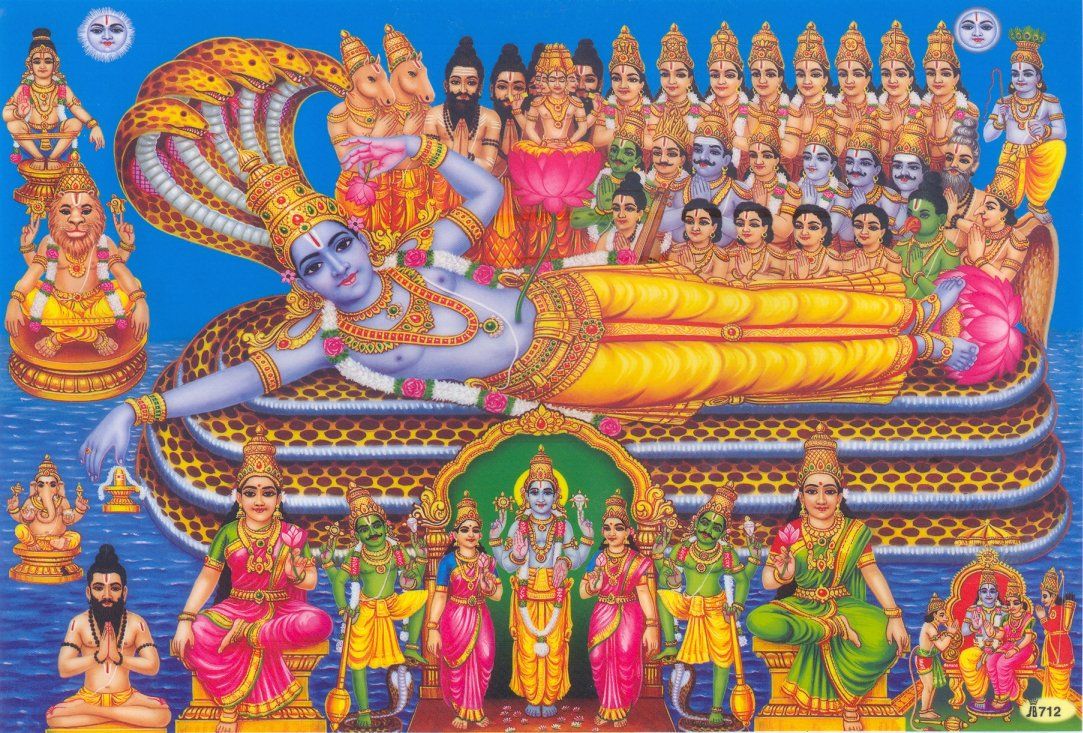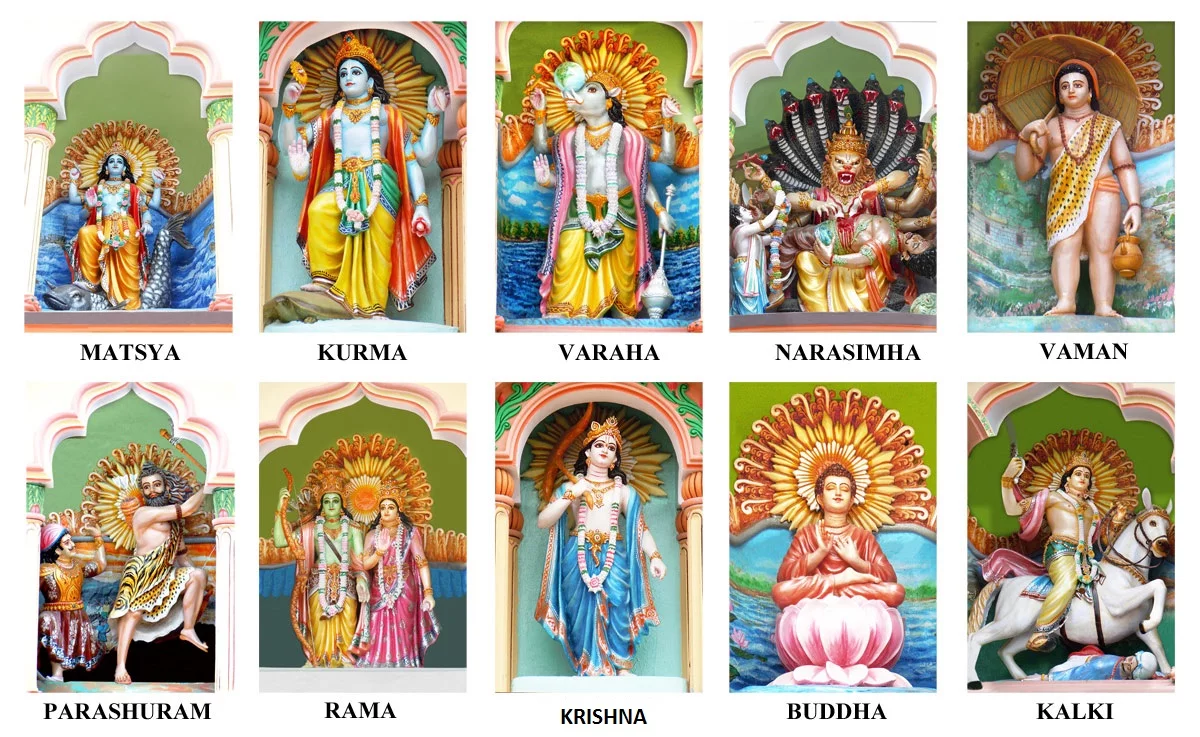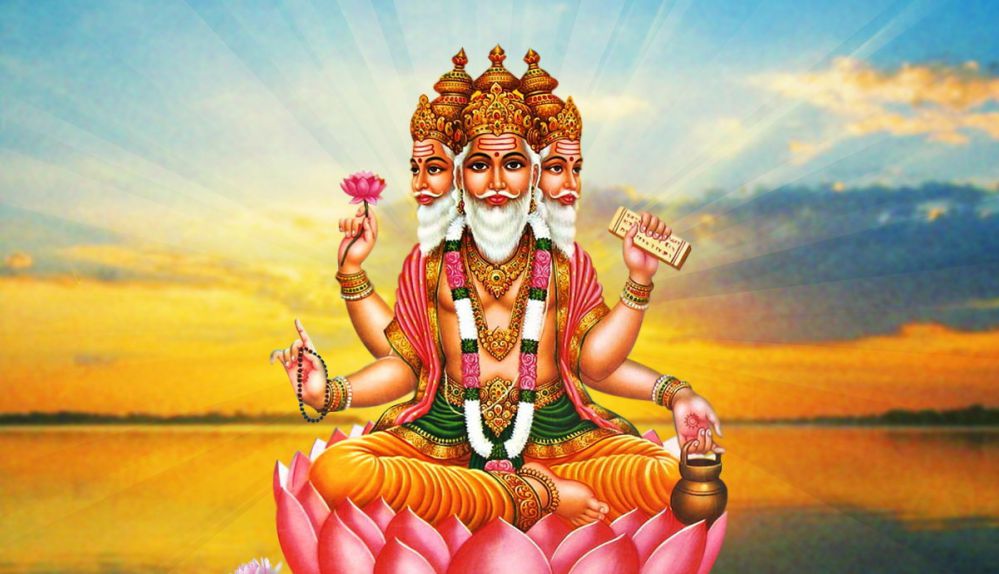Brahma is one of the principal deities in Hinduism and is considered one of the members of the Trimurti, which is the trinity of gods that includes Brahma, Vishnu, and Shiva. Each member of the Trimurti is responsible for a specific aspect of the universe and has a unique role:
- Brahma: Brahma is the god of creation. He is often depicted as having four heads, each facing a cardinal direction, and he is typically portrayed with a white beard and wearing a crown. He is associated with the creation of the universe and all living beings. However, Brahma is not as widely worshiped as Vishnu and Shiva in contemporary Hinduism. There are relatively fewer temples dedicated to Brahma, and he plays a more limited role in religious practice.
- Vishnu: Vishnu is the god of preservation and is believed to sustain and protect the universe. He is often depicted as having a blue complexion and is known for his various incarnations (avatars), such as Rama and Krishna, who descend to Earth to restore balance and righteousness. Vishnu is widely venerated by Hindus, and many temples are dedicated to him.
- Shiva: Shiva is the god of destruction and transformation. He is often depicted with a third eye on his forehead, a crescent moon in his hair, and a serpent around his neck. Shiva is also known as the god of meditation and asceticism and is considered one of the most powerful deities in Hinduism. He represents both the destructive and regenerative aspects of the universe.
While Brahma is considered one of the Trimurti, his role in Hindu religious practice is not as prominent as that of Vishnu and Shiva. According to Hindu mythology, Brahma is responsible for creating the world, but his creative role is largely complete, and he does not play as active a role in the ongoing processes of preservation and destruction, which are primarily associated with Vishnu and Shiva, respectively.
Brahma is also sometimes associated with Saraswati, the goddess of knowledge and the arts, as his consort. Together, they symbolize the union of creative power and knowledge.
It’s important to note that the worship and mythology of Hindu deities can vary among different sects and regions, and not all Hindus may consider Brahma a central figure in their religious practice.
Thus Brahma is the source, the seed, of all that is. He is, as his very name indicates, boundless immensity, from which space, time and causation originate, names and forms spring up. Philosophically, he is the first stage of manifestation of the notion of individual existence (Ahai1kara). Theologically, he is the uncreated creator (Svayambhu), the self-born first Person.
He has several designations which are as instructive as they are interesting. From the cosmological point of view he is the Golden Embryo (Hiranyagarbha), the ball of fire, from which the universe develops. Since all created beings are his progency, he is Prajapati,’ the lord of progeny, as also Pitamaha, the patriarch. He is Vidhi, the ordinator, and Lokesa, the master of the worlds, as well as Dhatr, the sustainer. He is also Visvakarma, the architect of the world.
Hindu mythological literature describes Brahma as having sprung from the lotus orginating from the navel of Visnu. Hence he is called Nabhija (navel-born), Kafija (water-born) and so on.
Curiously enough, the name Narayana (‘one who dwells in the causal waters’ or ‘the abode of man’) has been applied to him first and only later to Visnu.
Brahma, the creator, and Sarasvatl, his consort, are the subject of several tales in our mythological literature. They can be summaraised briefly thus:
.(1) Brahma was born out of the golden egg produced in the boundless causal waters. His consort Vac or Sarasvati was manifested out of him. From their union were born all the creatures of the world.
(2) Brahma represents the Vedas and Sarasvati their spirit and meaning. Hence, all knowledge, sacred and secular, has proceeded from them.
(3) Once Brahma became the boar and raised the earth from beneath the waters and created the world, the sages and Prajapatis. (This story was later transferred to Visnu).
(4) The forms of tortoise and fish (later considered as Avataras of Visnu) have been attributed to Brahma also.
(5) The great sages MarlcI, Atri, Ai1giras and others are his ‘mind-born’ children. Manu, the Adam of the Aryan race, is his great-grandson.
(6) He is easily pleased by austerities and bestows boons on the supplicants, be they gods, demons or men.
(7) He is the inventor of the theatrical art. Music, dance and stagecraft were revealed by him.
(8) He was the chief priest who performed the mar¬riage of Siva with Parvati.
In spite of the fact that Brahma is God the Supreme in the creative aspect and is an equally important member of the Hindu Trinity, it is strange that there are no temples dedicated exclusively to him, the one at Puskar being the solitary exception. Notwithstanding the crude reasons given in some of the Pural).as for this loss of Brahma’s prestige, some scholars opine[ See The Cult of Brahma, by Tarapada Bhattacarya, pp.88-89.] that the Brahma cult was predominant in the pre-Vedic Hinduism and was super¬seded or suppressed by the later Siva- Visnu cults.
In fact, the evolution of the Sakti concept-each of the gods Siva and Visnu having his Sakti or Power as his consort-and the explanation that creation proceeds out of the combination of the god and his Sakti, has made Brahma superfluous.
The icon of Brahma has four heads facing the four quarters; and they represent the four Vedas, the four Yugas (epochs of time), and the four Varnas (divisions of society based on nature, nurture and vocation). Usually, the faces have beards and the eyes are closed in meditation. There are four arms holding different objects and in different poses. The arms represent the four quarters. The objects usually shown are: Aksamala (rosary), Kurca (a brush of Kusa grass), Sruk (ladle), Sruva (spoon), Kamandalu (water pot) and Pustaka (book). The combination and arrangement vary from image to image. The rosary represents time, and the water pot, the causal waters, from which all creation has sprung. So, Brahma controls time as well as the principle of causation. The Kusa grass, the ladle and the spoon being sacrificial implements, represent the system of sacrifices which is the means to be adopted by the various creatures to sustain one another. The book represents knowledge, sacred and secular. He is the giver of all knowledge-arts, sciences and wisdom.
The poses of the hand (Mudras) are Abhaya (assuring protection) and Varada (granting boons).
The icon may be either in standing posture (standing on a lotus) or in sitting posture (sitting on a Harhsa or swan). Harhsa, his vehicle, stands for discrimination and wisdom.
Sometimes, Brahma is shown as riding in a chariot drawn by seven swans, standing for the seven worlds.
In temples exclusively dedicated to Brahma, his aspect as Visvakarma (the architect of the universe) is adopted. In this form he is shown as having four heads, four arms holding the rosary, the book, the Kusa grass and the water pot, and riding on his swan.
Every temple, be it of Siva, or Visnu, must have a niche in the northern wall for Brahma, and his image must receive worship every day since he is an important Parivaradevata (attendant of the Chief-deity).

